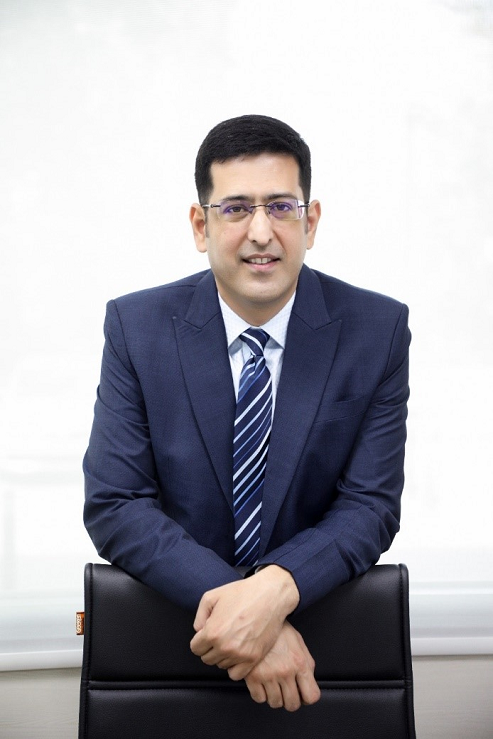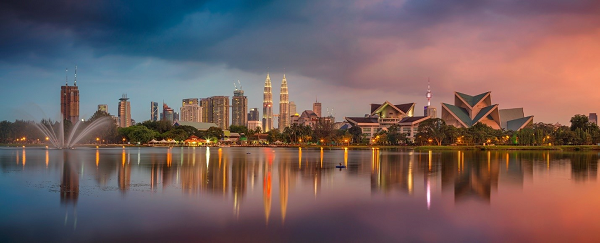09 January 2023
Tête-à-tête
FLYING HIGH

“With a pent-up demand in India to travel again, we've increased frequencies and upgraded to wide-body aircrafts for key routes" Amit Mehta, Country Manager, South Asia, Malaysia Airlines
Amit Mehta, Country Manager, South Asia, Malaysia Airlines, in conversation with Informa Markets in India about the latest development and the Indian Tourism market
Malaysia Airlines is progressively ramping up its capacity and introducing a strategic route expansion in of reopening of borders to international destinations, as the demand for international travel is ramping up.
The last decade has been quite challenging for Malaysia Airlines (MH). Adding to it, globally, the impact of Covid -19 on airlines has been highly adverse. How is MH coming back to normalcy?
Malaysia Airlines has come a long way amidst unfortunate circumstances. However, as an organisation, our agility and how we adapt to the changing circumstances will allow us to be better armed and equipped to serve our customers with par excellence and mitigate any future shocks to the organisation. Whilst the pandemic resulted in a full-scale global transportation crisis, it also allowed us the opportunity to reset our balance sheet.
Now, as nations progressively reopen their borders and are approaching a sense of normalcy, we see a strong pent-up demand among travellers.
This year, we have launched three new routes, including a direct flight from Kuala Lumpur - Doha and the Kuala Lumpur - Haneda in August 2022. We have also established an agreement with the Uzbek government to operate charter flights between the two countries: expanding our presence beyond our current network through smart partnerships.
Our priority remains the safety of our passengers, and we are committed to facilitating safe, seamless and memorable journeys so guests can continue to ‘Fly Confidently with Malaysia Airlines’.
While we are bullish in general, we remain cautious of the environments and will deploy fleet and network expansion opportunistically during peak periods to service high-demand/capacity sectors.
What is the current operational profile of MH in India? Are you planning to increase the frequency in the near future? Are there any new Indian destinations on the radar for connectivity?
Malaysia Airlines currently operates 29 weekly flights from India from five major cities in India, Delhi, Mumbai, Bangalore, Hyderabad, and Chennai. In early 2020, we flew to six destinations (including Kochi) with 60 times weekly flights. We will gradually increase these frequencies to cater to growing demands and add new routes when the opportunity arises.
What is the response, current load factor and yield from the Indian market? By when are you expecting to come to the pre-pandemic level?
The current load factor for the market has been encouraging, with up to 70% load factor on these flights and a forecasted forward load factor of up to 80% by 2022.
There is a strong pent-up demand in India to travel again, leading us to increase frequencies and upgrade to wide-body aircraft on certain flights/routes. We expect closer or short-haul destinations such as Malaysia, Indonesia, Thailand, and Singapore to see a substantial uptick in the next few quarters among the first-time international leisure travellers. We are also seeing much demand for Australia, Indonesia, Singapore and other Asia Pacific destinations on our network from India.
We are bullish for 2022-23 and are looking at achieving pre-pandemic capacity back for India by this time.
Earlier, MH was getting much Indian traffic that used to fly beyond the KL hub. How is the situation now?
As a member of the Oneworld alliance and through our extensive codeshare partnerships with global airlines, we are striving to develop Kuala Lumpur as a leading aviation hub in the Southeast Asia region by seamlessly connecting Malaysia to the world. To further encourage travel, the airline has also extended its previously launched ‘Bonus Side Trip’ programme to India, allowing passengers to add an extra leg to their journey and explore cultural gems at minimal costs, as well as extending its MHflypass programme to ASEAN destinations.
What is your marketing, promotional and trade engagement plan for India?
We have an excellent relationship with our trade partners. In terms of our marketing strategy, we have deployed curated campaigns and product offerings to stimulate and cater to the growing demands in the local markets. This includes joint consumer promotions with local OTAs to attract leisure consumers; roadshows with Tourism Boards; corporate travel programmes through MHBiz Pro and MHBiz Plus; MHexplorer platform for students; attractive flight and holiday package deals via MHholidays, and other fare products to suit different travellers needs.

Talking about sustainability, you recently operated your first Sustainable Aviation Fuels ( SAF ) powered flight. What other initiatives is MH planning on this front?
One of Malaysia Airlines' top priorities is to operate in a sustainable manner. As an airline under the Malaysia Aviation Group (MAG), it will focus on four near-term priorities in the journey to net-zero emissions: aircraft efficiency, technological enhancements to aircraft, sustainable aviation fuels (SAF), as well as carbon offsets. The MAG Sustainability Blueprint sets the course for Malaysia Airlines and its subsidiaries to play their role in a net zero carbon emissions future by 2050. We are proud to be taking tangible steps towards that goal.
As a pioneer in the use of SAF in Malaysian aviation, we have conducted the country’s first cargo and passenger flights using SAF. In December of last year, Malaysia Airlines flew the country’s first registered commercial aircraft using SAF from Amsterdam to Kuala Lumpur, and recently completed its first passenger flight from Kuala Lumpur to Singapore powered by SAF.
With the ever-changing customer behaviour and demands, is MH offering or launching something unique that meets their requirements?
Customer behaviour and demand patterns will continue to change, as more will demand flexibility as a core service attribute to account for unforeseen travel circumstances. With a certain level of uncertainty still prevailing, customers are on the lookout for bookings and fares that meet their requirements.
Understanding this need, Malaysia Airlines offers customers a flexible fare based on their travel needs, preferences, priorities and purchasing capabilities through the Horizontal Fare Family (HFF). It is a fare brand name which consists of Lite, Basic and Flex, where each fare family has different benefits such as baggage allowance, seat selections, and priority services. These fare brands also offer different flexibility in terms of refunds and rebooking.